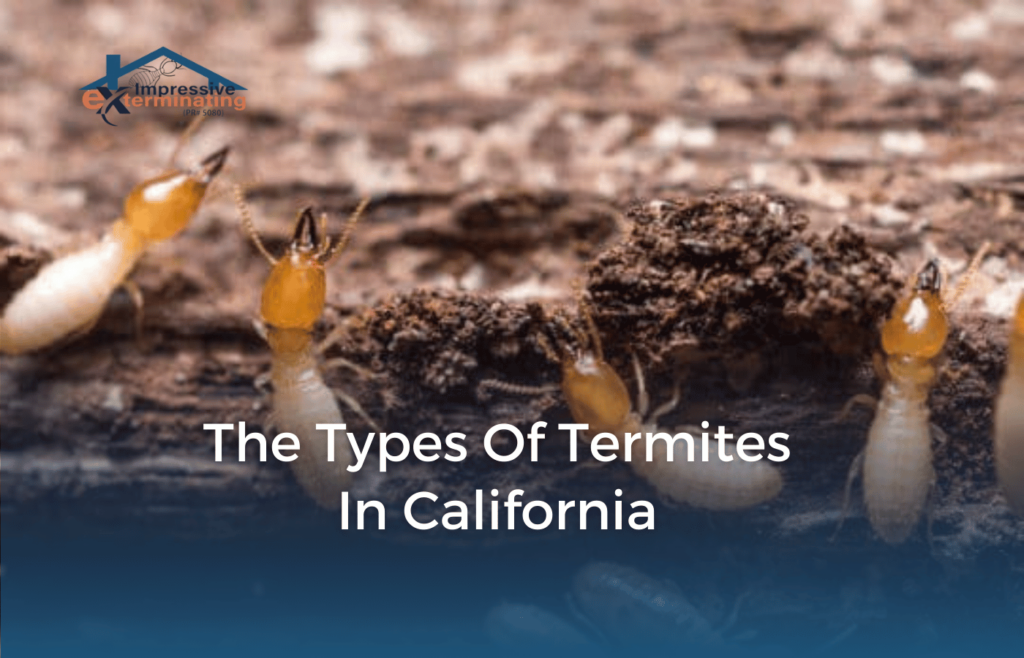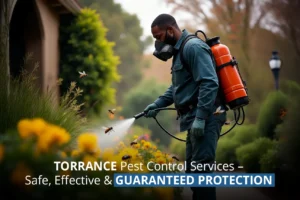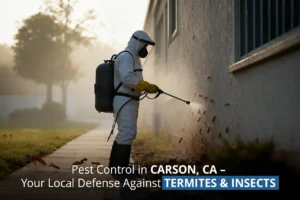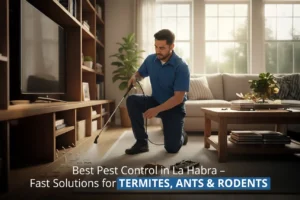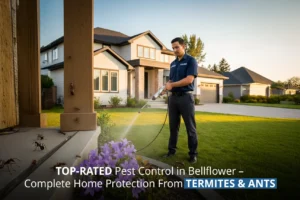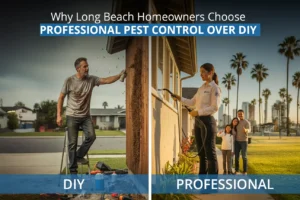Various termite species make their homes throughout the United States, but California is one of the worst places for property owners termite-wise. Understanding these wood-eating insects can help you protect your investments. This guide explores different termite types in the Bear Flag State.

Common Termite Species in California
Subterranean termites rank among California’s most widespread wood destroyers. These busy insects build mud tubes between soil and wooden structures. A mature colony might contain thousands of members, most of which will be underground. The worker termites measure roughly 1/8 inch long with cream-colored bodies. Soldiers sport larger heads with strong jaws to protect their nest mates.
Drywood termites prefer setting up colonies directly inside wooden items without ground contact. Unlike their subterranean cousins, these termites don’t need soil moisture for survival. Small colonies often hide within furniture, structural beams, or wooden decorations. Their pellets look like tiny grains of sand or pepper scattered near infested wood.
The third kind, damp wood termites, gravitate toward moist, decaying wood in natural settings. These larger insects measure up to 1 inch long and have reddish-brown coloring. Though less common inside buildings, damp wood termites occasionally infest structures with water damage or wood-to-ground contact.
Identifying Different Termite Types
Recognizing termite species helps determine appropriate termite control methods.
For starters, subterranean termites leave behind distinctive mud tubes along foundation walls or between soil and wood. Their workers also appear smaller than other species with soft, light-colored bodies.
In comparison, dry wood termites create small, clean-cut holes in wood surfaces. Their distinctive pellets accumulate below infested areas, resembling piles of coarse sand. Swarmers measure about 1/2 inch long, including wings, and show up during warm summer evenings or early fall.
Finally, you can tell damp wood termites from other types because they leave behind moist, damaged wood with tunnel patterns following grain direction. Their larger size makes them easier to spot during inspections.
Regional Distribution Across California
Different termite species prefer specific California regions based on climate and environmental conditions. Subterranean termites thrive throughout most areas but are abundant in central valleys and coastal regions, with increased activity during warmer months.
Drywood termites concentrate heavily along coastal areas from San Diego through San Francisco. Moderate temperatures and humidity levels create ideal conditions for these wood-dwelling insects. Interior regions experience fewer dry wood problems except in climate-controlled buildings.
Dampwood termites commonly appear in northern California forests and coastal areas receiving higher rainfall. These moisture-loving insects only establish themselves in drier inland regions if artificial conditions support their needs. Natural habitats include rotting logs, stumps, and living trees with decay.
Seasonal Activity Patterns
Subterranean termites show increased surface activity during spring months when temperatures warm. Meanwhile, drywood termites often swarm during late summer through early fall months. Dampwood termites generally swarm during the late summer months, coinciding with seasonal moisture changes. Their activity levels fluctuate based on environmental conditions rather than strict seasonal patterns. Consistently damp conditions support year-round activity in suitable locations.
Prevention and Management Strategies
Protecting properties against termite invasion requires understanding each species’ unique characteristics. Regular inspections help detect early signs before extensive damage occurs. Professional pest control experts can identify specific species and recommend appropriate treatment methods.
Reducing moisture problems discourages both subterranean and damp wood termites, and sealing entry points helps prevent dry wood termite infestations. Professional whole-house treatments provide longer-term protection when needed.
Investing in early intervention saves money by preventing extensive structural damage.
Despite their reputation as pests, termites serve important ecological functions in natural settings. These insects help decompose dead plant material, returning nutrients into soil systems. Their tunneling activities improve soil structure and water penetration in outdoor environments.
Working with qualified pest control professionals is the best way to guarantee proper treatment of identified species.

